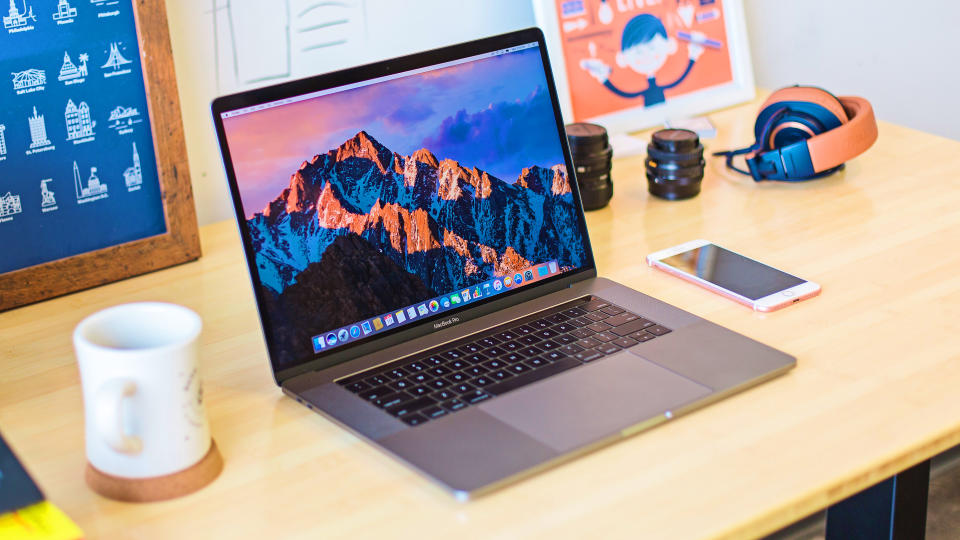Apple MacBook or Windows laptop – which is best for students and why?

With September fast approaching, it's time to start thinking about the gear you'll need to help you knuckle down for another school year, and that's where T3's Back to Class month comes in.
Before you head back to school, college or university, you’ll undoubtedly need one of the best student laptops – but choosing whether you want the best MacBook, the best lightweight laptop, or something else that's right for you can feel like a bit of a mission.
To get started, you’ll need to figure out whether you want an Apple MacBook or a Windows laptop, although that in itself is no easy task. Luckily, you’ve landed here, where I’ll take you through what you need to consider in deciding which one is best for you and what you plan to use it for.
There are certain specifications and features to look out for if you’re a student, some of which Apple does better (check out the best student MacBooks feature, as there are student discount details in there), and some of which are a win for Windows devices. Whichever you decide on, both offer some of the best laptops in the world.
MacBook vs Windows laptop: design & build
In terms of device design, the Apple versus Windows debate will largely come down to personal preference.
Some will likely prefer Apple’s stripped-back and minimalist aesthetics with the low-profile keyboards and super accurate trackpads. You are usually limited to just a few quite plain colourways though, such as Silver, Midnight Black, Space Grey and Starlight (which is a Champagne-like colour).
If you want to stand out a little in your lectures then Windows devices are a lot more diverse because you get tonnes of manufacturers to choose from. For instance, this Microsoft Surface Laptop 5 comes in a subtle green Sage colourway and a light pink Sandstone, as well as the usual Platinum or Black. You’ll also get more choices in the type of keyboard, trackpad and selection of ports.
One thing you are guaranteed with a MacBook is build quality, which isn’t necessarily the case with some Windows PCs. Apple’s devices are very sturdy with firm hinges which means that not only can they be knocked about a bit in your bag but they’re also easy to open up one-handed without the base moving. It might seem like a minor plus point but it makes a lot of difference when you're working on the move.

Perhaps most importantly, the majority of students will be looking for something that they can easily carry back and forth from class. Both Apple and Windows have plenty of options when it comes to the best lightweight laptops, even if you want a bigger screen.
Take the Apple MacBook Air 15-inch (2023), it has a huge 15-inch display but only weighs 1.5kg, making it extremely portable – and that drops to only 1.24kg if you opt for the 13-inch Apple MacBook Air (M2, 2022).
Similarly, the LG Gram 16 (2022) is a Windows PC with a 16-inch display which only weighs 1.16kg. Or the Dell XPS 13 is our top pick if you don’t need a massive screen, as that only weighs 1.27kg.
Another perk of some Windows devices is that they are able to transform into a tablet thanks to a touchscreen and either a rotating hinge or a removable screen. The OS will switch into a dedicated Windows tablet mode for ease of use and some will come with stylus support too. Take a look at the best 2-in-1 laptops to see T3's top picks.
In comparison, Apple doesn’t currently have any touchscreen MacBooks available to buy – although it’s rumoured one could be coming in the next couple of years. Failing that, however, you could actually consider one of the best iPads plus accessories as an alternative.
MacBook vs Windows laptop: performance & hardware
You’ll need to think long and hard about how exactly you intend to use your new laptop before deciding on whether to buy an Apple MacBook or a Windows laptop, partly because you’ll need to pick a device with the right performance capabilities.
The latest MacBooks come loaded with the tech giant’s own Apple Silicon processors which deliver an impressive amount of power, making their devices some of the best-performing ever, especially if you go for a top-of-the-range machine like the MacBook Pro 16-inch (M2 Pro, 2023).
Because of that, MacBooks are ideal for the most demanding tasks like photo and video editing or music production. If you’re taking a creative course then chances are a MacBook will be the more suitable choice. They can be pricey as a result, though.

Windows, on the other hand, has more variety. If you just plan to type out documents and browse the web then you could save some cash by buying a laptop with a simpler processor such as the AMD Ryzen 5 in the Acer Aspire 5.
If you need as much power as possible, there are plenty of Windows PC options to choose from as well – you should look for something with the latest 13th Generation Intel Core i5 or i7 processors. It's quite common that coders prefer using Windows PCs, so if that's your future plan then Microsoft may be your best choice.
For students who plan to game in their free time, Windows is the only route we’d recommend because you can configure your new device with the perfect processor, graphics card, RAM, storage, and so on. That’s why all the best gaming laptops run the Windows operating system. Sure, Apple's Metal is getting better on its latest M2 silicon, but compatibility isn't nearly as wide just yet (it's better set for simulations, video processing, CAD and such like).
MacBook vs Windows laptop: features & usability
At the time of writing, the most recent Apple computers run on macOS 13, while on PC it's Windows 11.
The latter has a lot of useful productivity features, as well as some that will help you nail multitasking. Snap Layouts lets you quickly divide up your screen so you can display multiple apps at once. Press the Windows key and Z to place your windows within one of several preset screen layouts. It’s a blessing for efficiency, although it does work better on a bigger display.
Other Windows 11 features let you switch between windows using a simple keyboard shortcut, see thumbnails of your open windows along the taskbar when you hover over the app icon, and you can share any window from your taskbar with those in your video calls, to name just a few.

Mac OS is nowhere near as well thought out as this, it’s harder to flick between windows and it’s even more difficult to see what you have open at any one time (you’ll just see a dot below the taskbar icon to show an app is running). There are multiple desktops and shortcuts the display all open apps, but I find it less practical personally.
The level of control you get over your PC and its settings is much more advanced on Windows as well. The downside of that is that it applies to developers too – which means that not all programmes work as well as others. On the flip side, macOS ensures every piece of software looks uniform, which ultimately makes the whole system feel very simple and intuitive to navigate.
Apple's macOS comes with some handy apps which will be really beneficial to creative work, like GarageBand and iMovie, whereas Windows leans more towards practical programmes like Microsoft OneNote and Outlook. That's definitely something to consider depending on which courses you're taking this year.
Both systems have a built-in voice assistant, Apple uses Siri while Windows uses Cortana (the latter which can also be used to send commands to your Amazon Alexa devices). Both will let you control compatible smart home kit, open up apps and set alarms or reminders amongst other things. The winner there will depend on what smart home tech you have installed at home, if any.
Apple vs Microsoft: ecosystem
Apple’s ecosystem of devices is built so each works seamlessly with one another. You can effortlessly share files between your iPhone and laptop using AirDrop, connect your Apple AirPods simply by taking them out of the case, send iMessages over your internet connection or control your smart home using Siri.
Apple arguably ties all of this together much better than anyone else so if you already use any Apple kit then it may not be worth jumping overboard when it comes to a new laptop.

That’s not to say that Windows doesn't do any of this, and because Windows is so open, you won’t be tied to a manufacturer. If you own a recent Android or Apple smartphone then you’ll be able to hook it up to your Windows 11 PC using Phone Link, which allows you to view your handset’s photos, answer texts and take calls from your laptop.
Furthermore, many manufacturers have invested in their own ecosystem tie-ins, such as Ready For from Motorola, or Huawei Share for, you guessed it, Huawei products. It's quite common, but I feel Apple still nails this better overall.
MacBook vs Windows laptop: price & conclusion
Students on a budget will have to buy a Windows PC over a MacBook – the best laptops under £500 are all Windows or ChromeOS devices (the latter being Chromebooks, which we've not covered in this feature). Naturally, you can also spend big on the most premium Windows laptops, but Apple’s are unavoidably expensive across the board. That could be a deal-breaker for some.
As a whole, Windows laptops will be better for most students, they can be big or small, suited to gaming or simple web browsing, packed full of features or stripped-back and simple. They’re excellent for productivity, they work well with most other devices and you get lots of control over the system settings and programmes.
In saying that, if you’re already an Apple user, you have a bigger budget and you need to use creative apps regularly then you literally cannot beat one of the best MacBooks. But be smart: you don't necessarily need the very latest hardware, as an M1 processor may suffice if it's far cheaper than a newer M2 option. That could be a game-changer on the budget front.
